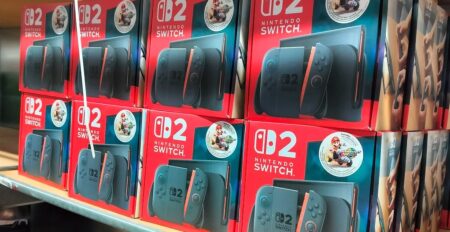The gaming handheld market has been growing rapidly, but Valve’s Steam Deck faces some real limitations. While the device runs on SteamOS and can play many Windows games through its Proton compatibility system, it still can’t run every game that Windows can handle. This gap leaves room for competitors to step in.
Microsoft and ASUS have recognized this opportunity. They’re working together on the ROG Xbox Ally, a new gaming handheld that runs full Windows but includes a special Xbox-branded interface designed specifically for handheld gaming. This collaboration aims to give gamers the best of both worlds: complete Windows game compatibility and a user-friendly handheld experience.
The new Xbox interface completely takes over the traditional Windows desktop on the ROG Xbox Ally. Instead of dealing with the usual Windows taskbar and desktop icons, users get a clean, tile-based interface that works perfectly for gaming on a small screen. This approach saves around 2GB of RAM and reduces power consumption, which means longer gaming sessions.
Microsoft has confirmed that this Xbox interface will expand beyond the ROG Xbox Ally. Other ASUS handheld devices will receive it next, and similar interfaces will roll out to various Windows handhelds starting in 2024.
The Long Road to Handheld Optimization
Microsoft didn’t develop this solution overnight. Internal documents show that company employees identified Windows’ handheld gaming problems during a hackathon in 2022. They created a presentation outlining a “Windows Handheld Mode” that would address issues like poor touch screen optimization and limited controller support outside of Steam and games.

The proposed solution included a Switch-style gamepad interface with better touch controls and improved visibility on small screens. While it’s unclear if the current Xbox interface directly stems from that 2022 presentation, the similarities suggest Microsoft has been working on this problem for years.
Current Windows handhelds like the regular ROG Ally require additional software layers to bridge the gap between Windows and handheld gaming. ASUS uses its Armoury Crate software for this purpose, but these extra programs consume system resources and create complexity. The new Xbox interface eliminates much of this overhead by replacing Windows’ traditional interface entirely.
Users will still be able to access the standard Windows desktop when needed, but they’ll need to specifically choose to launch it. This approach mirrors SteamOS, where the gaming interface takes priority, but desktop functionality remains available.
Microsoft’s Delayed Response Creates Opportunities and Risks
Microsoft’s slow response to the Steam Deck phenomenon has created both opportunities and challenges. Initially, many questioned whether Valve’s handheld would succeed. Gaming handhelds also don’t directly threaten traditional gaming PCs, which remain much more powerful. Microsoft has been heavily focused on artificial intelligence development and security improvements over the past two years, leaving less resources for gaming hardware innovation.
However, this delay has allowed SteamOS and its underlying Proton compatibility layer to mature considerably. Proton has improved dramatically thanks to increased development attention and resources. More importantly, SteamOS is expanding beyond the Steam Deck to other gaming handhelds and PCs, including some ASUS ROG Ally hardware.
Linux desktop market share has grown steadily, surpassing 4% for the first time last year. While this hasn’t caused a mass migration away from Windows, it represents a growing trend. For decades, Windows maintained its dominance partly through superior compatibility with games and applications. Projects like Proton challenge this advantage by letting users run Windows software without actually using Windows.
This development could potentially break the cycle of user lock-in that has kept Windows as the default choice for PC gaming. If alternatives become viable enough, Microsoft risks losing its position as the path of least resistance for PC users.
The ROG Xbox Ally represents Microsoft’s direct answer to this challenge. By combining Windows’ complete game compatibility with a purpose-built handheld interface, Microsoft hopes to maintain its gaming market position while adapting to changing user preferences and hardware form factors.




